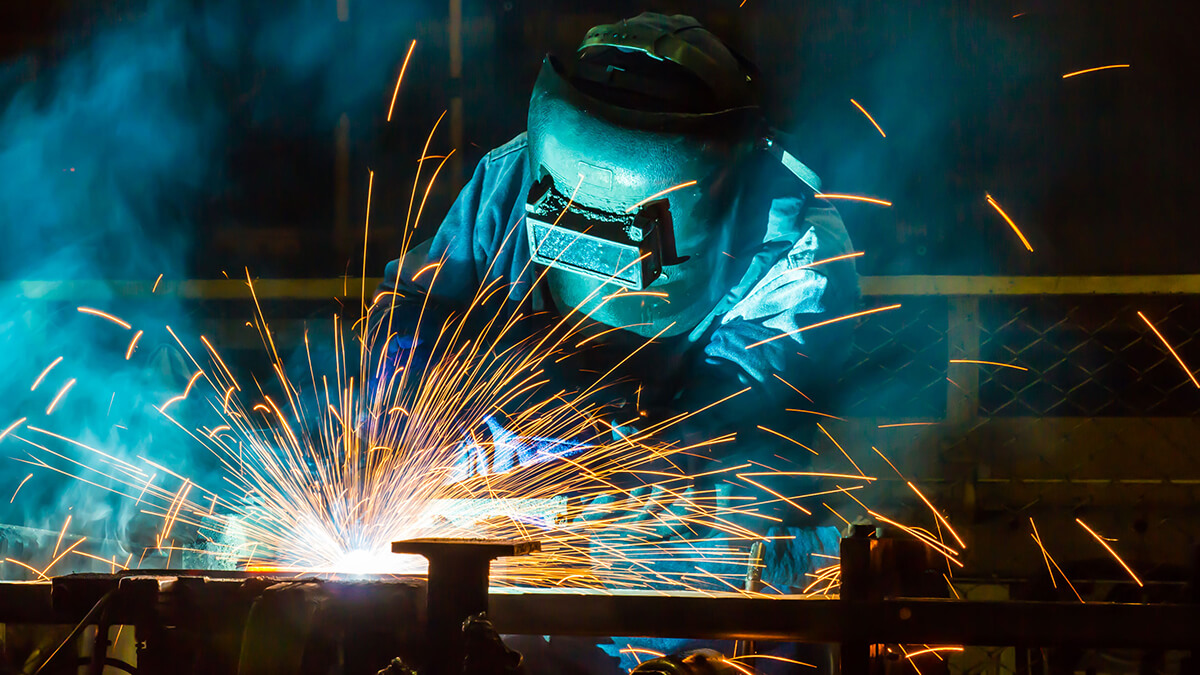Welding is a method to make two metal blocks belong together. Metal weldability is the ability of metal materials to adapt to the welding process. Under certain welding process conditions, whether it can obtain high-quality welded joints and whether the welded joints can operate safely under use conditions is an evaluation standard.
What Is Metal Welding?
The weld ability of the metal refers to the adaptability of the metal material to the welding process, mainly refers to the difficulty of obtaining high-quality welded joints under certain welding process conditions. Broadly speaking, the concept of "weld ability" also includes "availability" and "reliability". Weld ability depends on the characteristics of the material and the process conditions used. The weld ability of metal materials is not static but develops for example, for materials that were originally considered to be poor in weld ability, with the development of science and technology, new welding methods have become easier to weld, that is, the weld ability has become better. Therefore, we cannot leave the process conditions to talk about weld ability.
Weld ability includes two aspects: one is the joint performance, that is, the sensitivity of forming welding defects under certain welding process conditions; the second is the practical performance, that is, the adaptability of the welded joint to the use requirements under certain welding process conditions.
Common methods of metal welding:
Metal welding refers to a method of connecting two separate metal objects (same or dissimilar metals) by atomic or inter molecular bonding through appropriate means. At present, most metals can be welded by one or more welding methods. The weldable thickness of metals with good weld ability is very wide. From the thinnest plate to the thickest plate, they can be welded. Welding at any position; some metals cannot be connected by any welding method. The properties of various metal materials (such as melting point, density, thermal conductivity, tensile strength, and plasticity, etc.) can be used to measure the difficulty of welding metal materials.
Among all metal materials, ordinary carbon steel is the most widely used and the largest amount; the second is cast iron, but most of the cast iron materials are not used for welding structures, and there are also needs for welding or welding repair; the other is alloy steel, different alloys steel (such as low-alloy high-strength steel, heat-treated steel, ultra-high-strength steel, etc.) needs to be welded using different welding processes; aluminum and its alloys are more and more widely used due to large reserves, especially in applications requiring lightweight. The aluminum alloys have different properties and need to be welded by different welding processes; copper and its alloys are mainly used in applications where electrical conductivity, corrosion resistance, or thermal conductivity are required; stainless steel and cast steel welding processes are similar in composition. Rolled steel, different stainless steels have large performance differences, and different welding processes; although nickel and its alloys are not widely used and the amount is small, they are very important because nickel alloys are the best choice in certain application environments; magnesium and Its alloy are the least commonly used metal. She is also very important because it is the lightest one among the commonly used metals. This material is mostly used in welded structures.
Classified by the family method: Welding methods can be divided into three categories: fusion welding, solid-phase welding, and brazing. Melting welding is divided into energy sources: arc welding, gas welding, thermite welding, electroslag welding, etc.
-
Arc Welding
Arc welding uses the burning arc between the electrode and the work piece as the heat source. It is currently the most widely used welding method. The tower includes: electrode arc welding, submerged arc welding, tungsten gas shielded welding, plasma arc welding, and molten electrode gas shielded welding.
- Electrode Arc Welding
It uses the electrode coated with paint on the outside as the electrode and filler metal, and the arc burns between the end of the electrode and the surface of the work piece to be welded. The role of the coating under the arc: on the one hand, it can generate gas to protect the arc, on the other hand, it can produce slag covering the surface of the molten pool to prevent the molten metal from interacting with the surrounding gas. The more important role of the slag is to add alloy elements to the molten pool to improve the performance of the weld metal. It is currently the most widely used welding method.
- Submerged Arc Welding
Submerged arc welding uses continuous feeding wire as the electrode and filler metal. During welding, a layer of granular flux is covered in the welding area. The arc burns under the flux layer, melting the end of the wire and the local base metal to form a weld seam.
Submerged arc welding can use a larger welding current, its biggest advantage is high welding speed, good weld quality, especially suitable for welding large seam straight seam ring seam.
- Tungsten Gas Shielded Welding
It belongs to in fusible electrode gas shielded arc welding, which uses the arc between the tungsten wire and the work piece to melt the metal to form a weld. During welding, the tungsten wire does not melt, only the electrode function. At the same time, the nozzle of the electric welding torch sends argon or helium gas to protect the arc and the molten pool. You can also add filler metal as needed. It is called TIG welding internationally.
Tungsten gas shielded welding is an excellent method for thin plate metal and bottom welding because it can control heat input very well.
- Plasma Arc Welding
It belongs to in fusible electrode arc welding. It uses the compressed arc between the electrode and the work piece to achieve welding. The electrode is usually a tungsten electrode, which generates plasma-arc plasma gas. Welding can be done with or without metal.
The plasma arc is straight, the energy density is large, and the arc penetration ability is strong. The small hole effect generated during welding can be used for butting the metal within a certain thickness, and the production efficiency is high and the weld quality is good.
- Melting Electrode Gas Shielded Arc Welding
It uses the burning arc between the continuously fed wire and the work piece as a power source and uses the gas sprayed from the spot-welding torch nozzle to protect the arc for welding.
Advantages of gas-shielded arc welding of the melting electrode: It is convenient for welding in various positions, and has the advantages of fast welding speed and high deposition rate.
- Flux-Cored Wire Arc Welding
It belongs to a type of gas arc welding with the melting pole. The core of the welding wire is equipped with various powders, and the added gas is mainly carbon dioxide. The powder is decomposed and melted by heat to produce gas, slag, protective molten pool, alloying, and arc stabilization.
The flux-cored wire arc is called self-protected flux-cored wire arc welding without additional shielding gas.
-
Resistance Welding
Resistance heat is an energy source and is divided into electric welding slag and resistance welding. Mainly welding, seam welding, projection welding, and butt welding.
-
High Energy Beam Welding
- Electron beam welding
- Laser welding
-
Brazing
A metal with a melting point lower than the melting point of the material to be welded is used for the brazing. The heating material melts, and the capillary action sucks the material into the gap of the contact surface of the joint, wets the metal surface, and diffuses the solid phase and the liquid phase to form a welding joint.
-
Other Welding Methods
Electroslag welding, high-frequency welding, gas welding, air pressure welding, explosion welding, friction welding, cold pressure welding, ultrasonic welding, diffusion welding, etc.







.png)






